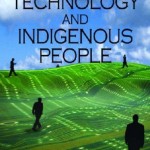Plugged in: Remote Australian Indigenous Youth and Digital Culture
(http://caepr.anu.edu.au/sites/default/files/Publications/WP/WP69_0.pdf)
Description:
Plugged in: Remote Australian Indigenous Youth and Digital Culture is a paper put out by the Centre for Aboriginal Economic Policy Research at the Australian National University. In this paper there are themes and examples in which Indigenous youth have utilized digital technologies thus creating a sense of “fitting in” to the globalised youth culture. The paper also discusses how technology is allowing Indigenous youth in remote regions of Australia to acquire new skills and new roles in their communities. The apparent overtone of the paper is positive with respect to Indigenous youth and the use of digital technology.
~ Ryan



